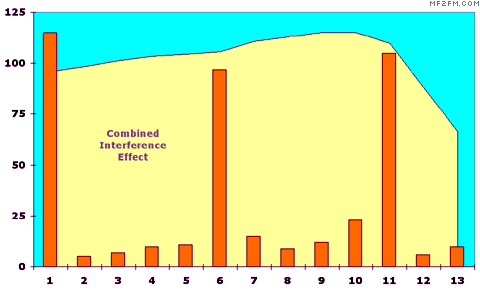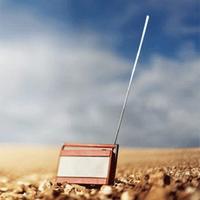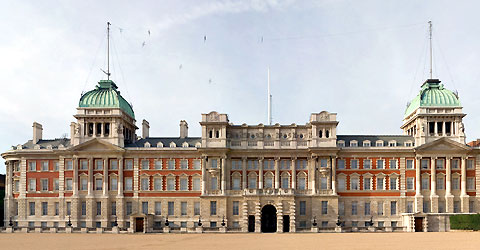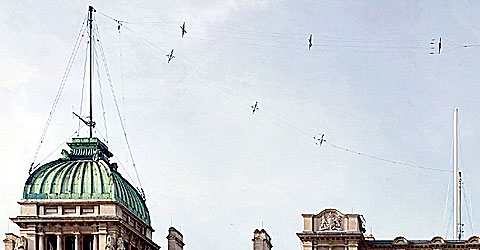Saturday 26 July, 2008, 16:01 - Radio Randomness
Posted by Administrator
Watching a number of hot air balloons float gracefully past recently, the question arose as to whether or not they used radio to communicate with the ground and, indeed, whether they used radios to communicate with air traffic controllers. A bit of digging around revealed that they do indeed carry aeronautical radios with them, and what's more they have a special 'balloon to ground' frequency. Not just that, but the same is also true of gliders, parachutists, microlights and hang- and para-gliders.Posted by Administrator
Below are all the commomn frequencies (in MHz) which are set aside, in the UK, exclusively for these special purposes, including a frequency set aside for fire services at airfields:
120.900, 130.100, 130.125 and 130.400 Gliders
129.975 Gliders (to mobile field units)
122.475 Hot Air Balloons
130.525 and 129.900 Parachutes
129.825 Microlights
118.675 Hang/Paragliders
121.600 Ground Fire Services
 The very observant amongst you may note that the frequency for Hang/Paragliders is just 25 kHz away from the Heathrow Airport (arrivals) tower frequency of 118.700 MHz. Typically, frequencies this close are not used in the same area so that any Hangglider flying near to Heathrow may cause disruption to the tower communications (and indeed the governing body for aero frequencies, ICAO, does not allow such clashes). The exceptionally observant amongst you will realise that if a hangglider got close enough to Heathrow airport to cause interference, it would have greater things to worry about than radio! So by simple spatial collision avoidance, interference is likewise stopped.
The very observant amongst you may note that the frequency for Hang/Paragliders is just 25 kHz away from the Heathrow Airport (arrivals) tower frequency of 118.700 MHz. Typically, frequencies this close are not used in the same area so that any Hangglider flying near to Heathrow may cause disruption to the tower communications (and indeed the governing body for aero frequencies, ICAO, does not allow such clashes). The exceptionally observant amongst you will realise that if a hangglider got close enough to Heathrow airport to cause interference, it would have greater things to worry about than radio! So by simple spatial collision avoidance, interference is likewise stopped.add comment
( 1118 views )
| permalink
| 



 ( 3.2 / 28299 )
( 3.2 / 28299 )




 ( 3.2 / 28299 )
( 3.2 / 28299 )
Thursday 26 June, 2008, 06:51 - Radio Randomness
Posted by Administrator
Another long train journey, another opportunity to run Netstumbler to find out what is going on in the world of WiFi. On this journey 425 WiFi (802.11b and 802.11g) access points were identified. No 802.11a (5 GHz) access points were spotted. Of these, 24% were not encrypted or protected in any way (however, some of these are public access points such as 'BT OpenZone' and so would not be expected to be encrypted). This means that the proportion of home WiFi nodes that are now protected has gone up significantly since the last time this was tested.Posted by Administrator
The graph below shows, in orange, the number of times that each channel was found to be in use. As expected, channels 1, 6 and 11 were the most commonly used, with channel 1 winning out over channel 11 in terms of usage for a change.

What the graph also shows is the combined interference effect of all the nodes across the whole WiFi frequency band. This has been done by adding the use of a channel with (5-n)/5 times the use of the frequency n channels away. So a channel 3 frequencies away from the channel in question would add 2/5ths of its interference to the total combined effect. This takes account of the OFDM nature of WiFi and thus the fact that the less two channels overlap, the lower the interference problem.
What's interesting about this result is that interfernece remains fairly constant across the whole band, with the exception of channels 12 and 13. This is perhaps not surprising as, channel 9, for example, will suffer 3/5ths of the interference in busy channel 11, and 2/5 of the interference in busy channel 6. Only when we get above channel 11 does interference fall as only one busy channel (11) is now adding to the combined interference 'mush'.
The frequencies above channel 13 (i.e. above 2483.5 MHz) are not used for WiFi and although no account has been taken of usage above (or below) the band, if usage is not widespread (at present it is reserved for an as yet non operational satellite system), then the overall level of interference in channels 12 and 13 will, indeed, be lower.
Tuesday 1 April, 2008, 10:24 - Radio Randomness
Posted by Administrator
Posted by Administrator
 You've no doubt heard of pencil sharpeners and knife sharpeners, both designed to ensure the maximum of performance from the devices on which they operate. Well, on April 1 this year, researchers at the University of Al Tayr, in Tripoli, Libya released details of the results of a 5 year study that they have been conducting in which they believe they have discovered the world's first 'frequency sharpener'. Details are somewhat scant but if the device can deliver the kind of results that have been quoted in the research, the frequency sharpener could be being included in many new digital radios of the future as soon April of next year.
You've no doubt heard of pencil sharpeners and knife sharpeners, both designed to ensure the maximum of performance from the devices on which they operate. Well, on April 1 this year, researchers at the University of Al Tayr, in Tripoli, Libya released details of the results of a 5 year study that they have been conducting in which they believe they have discovered the world's first 'frequency sharpener'. Details are somewhat scant but if the device can deliver the kind of results that have been quoted in the research, the frequency sharpener could be being included in many new digital radios of the future as soon April of next year.In the University's press release, Prof. Ali Lo says of the frequency sharpener:
With weak signals, it is like a thousand camels standing through your receiver to blunt the sound. The frequency sharpener acts between these blunt and dull edges using a special digital encoded Saif Al Nisan algorithm that swipes away and cuts off the noise to leave only clear oasis of surrounding signal.
The release is rather thin on technical details of how the sharpener functions but goes on to claim:
Tests in laboratory of testing have shown, masha'allah, that 12 times improvement in frequency sharpness can be made to receive signal with almost no hump blockage in background or foreground. Works of programme suggest that remaining disturbance no worse than size of golden sand rabbits of similar proportion. By development, frequency sharpener will deliver 20 to 25 times decrease in annoyance of radio camel noise for new design of radio receiver in Arabian region. Better results with Saif Al Nisan algorithm than traditional threshold extension or synchronous detection methods employed before this discovery.
 We've sent an e-mail to the professor to see whether he could provide more information on how the frequency sharpener works, however from reading between the lines of the press release, we have been able to piece together how we think the device works:
We've sent an e-mail to the professor to see whether he could provide more information on how the frequency sharpener works, however from reading between the lines of the press release, we have been able to piece together how we think the device works:- The sharpener first stores ambient noise received when the wanted signal is gone, or from areas around the wanted signal.
- When required, this noise can be metabolised to act as a source of 'anti-noise' (similar to noise cancelling headphones) which cancels out the incoming 'live' received noise.
- This yields both a reduction in noise and, as a bi-product, generates spare energy that can be used to boost the wanted signal.
- The process of noise metabolisation generates a net reduction in both the stored and received noise, as well as amplifying the wanted signal.
- The system though, if it works as we suspect, requires the noise store to be 'topped up' from time-to-time. Once the noise store is empty (for example, if there is no longer noise on the received signal), the device returns to the normal state with no noise reduction taking place.
Tuesday 11 September, 2007, 14:07 - Radio Randomness
Posted by Administrator
OK, so it's not as snappy as 'spot the ball' but the idea is the same. Look at the picture below and see if you can spot the HF antenna. Clue: Look for the 'x's.Posted by Administrator

A bit silly perhaps, but the thing of interest is that this building is the Admiralty Building as seen from Horseguards Parade in Central London and that those really are HF antennas (see the expanded picture below). Whilst it's easy to dismiss good old fashioned short wave communications as outdated, especially in the age of satellites and mobile phones, it's very satisfying to see that those who need some assuredness of communication think it worthwhile to defile historic buildings in the centre of an area of tranquility and beauty with whopping great big, ugly HF aerials.

It doesn't necessarily follow, but it might be fair to presume that the people who did this (let's call them the 'military' for want of a better word) will be keen to ensure continued, low-interference access, to HF spectrum for some time to come. Which has to be good news for short-wave listeners and radio amateurs alike.


